The Finding of a Classic
by Bernard L. Warren
Reprinted from "Crown Jewels of the Wire", November 1995, page 16
P. WALTERS
& CO
LONDON
Imagine stumbling around in brush and high grass along an abandoned railroad
grade and almost tripping over an undiscovered style of an 1870’s to 1880’s
classic porcelain insulator in mint condition. Nice! Imagine that insulator
still being tightly cemented inside a heavy iron cover for protection and having
two ears to hold heavy gauge telegraph wire without tie wires. Very nice! Now,
imagine that iron cover having four, tear drop openings to allow rain water to
keep the base washed clean and a tapered iron pin with a crude spur near the
base, instead of the typical threaded bolt and nut type pin. Unbelievable!
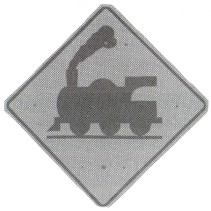
You sink slowly to the ground and carefully pick the insulator up to admire
it. As you turn it over, you almost drop it. Staring up at you from the side of
the dome is the bold embossing:
P. WALTERS
& CO
LONDON
You wonder if you are dreaming.
The above incident happened to me in April, 1995 while Jim Bergman and I were
making our second, extensive insulator research trip to Uruguay, South America.
A quick shout brought Jim, and I shared the find with him. Jim is not a
porcelain collector, but the look that crossed over his face and the sudden
smile let me know what he thought of the find. This find occurred early in the
morning, near the Brazilian border in northern Uruguay. Jim and I spent most of
the day searching the old railroad grade and eventually recovered a damaged
specimen and an empty iron cover. Heavy afternoon rains forced us to leave the
rough, dirt road we were on and move on toward our next destination. By this
time, we had already determined that, if this proved to be a really classic
find, a return trip to the area was a must.
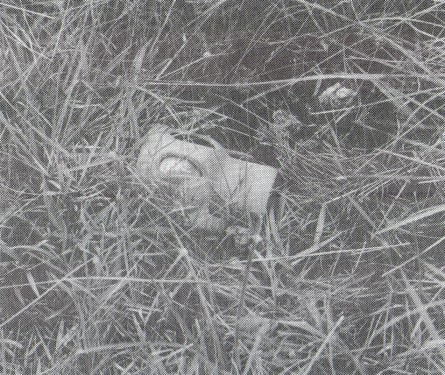
The first P. WALTERS/& CO/LONDON, just as found.
Shortly after we returned to Alaska, I shared photos and detailed information
on the P. WALTERS with Marilyn Albers. She was ecstatic over the find and had
never seen an insulator just like it. A somewhat similar insulator, the Fuller
Bow specimen shown on page 47 of W. Keith Neal’s book Searching for Railway
Telegraph Insulators has only one ear and oval openings. It was patented in
1867.
This information, plus the interest created by the display of the P. WALTERS
at the Marlborough National convinced Jim and I that a third trip to Uruguay was
a must. We had spotted a few of the old telegraph poles, actually, very high
iron rails used as poles, still standing in remote areas in April. Most of these
standing rails were bare at the top but a few still had British Cordeau style
replacement insulators on them. Remarkably, a couple of these tall rails had the
original P. WALTERS insulator firmly in place on short crossarms. Jim had
shimmied up both of these rails and, while holding on for dear life, had tried
to pry the P. WALTERS from the crossarm without success.
We returned to Uruguay on August 14, 1995 armed with the “retriever”. The
“retriever” was Jim’s brainchild, a twenty foot long, heavy duty aluminum
pole made up of sections joined together by sleeves and bolts for portability. A
Swede saw with an eye bolt welded at the top was bolted to the top of the pole.
A small rope was threaded through the eye bolt and an open loop formed above it.
The “retriever” was then raised up, the loop placed over the P. WALTERS and
pulled very tight. After the crossarm had been severed or the P. WALTERS freed,
it was carefully lowered to the ground with the rope to prevent damage.
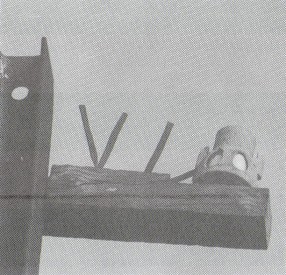
300 mm telephoto of a beauty awaiting
recovery. The spikes were to discourage
nest building by very persistent birds.
Our first two attempts at using the “retriever” were painful experiences
with Jim and I both getting our eyes filled with sawdust. A few adjustments in
our recovery methods solved this problem and we were able to complete the
recovery of the P. WALTERS in a very short time.
FCUN: The second insulator Jim and I recovered during this August expedition
really got our adrenaline pumping. On the back side of the dome, opposite the P.
WALTERS embossing was the even larger, boldly embossed letters “FCUN”. A few
more of these FCUN embossed specimens were recovered, most with medium to heavy
damage. Two specimens were found with a very small vertical, incuse stamping of
FCUN on the back of the dome.
Jose Luis Rubio, a good friend in Montevideo, solved the mystery of the FCUN
embossing and its significance. FCUN stood for Ferro (Rail) Carril (Road)
Uruguay Norte or literally, the Railroad of Northern Uruguay. Jose promised to
do some additional research on the construction and operation of this railroad
during the following week, while Jim and I were in Argentina.
Gus Coll another good friend in Montevideo, provided us with the only
information currently known about the P. WALTERS Company. Gus had worked with a
telegraph company in the early 1960’s and he recalls reading that P. WALTERS
& CO was an early telegraph supply company in London. He believes they
operated from the 1850’s to the early 1920’s. Research is continuing on P.
WALTERS & CO.
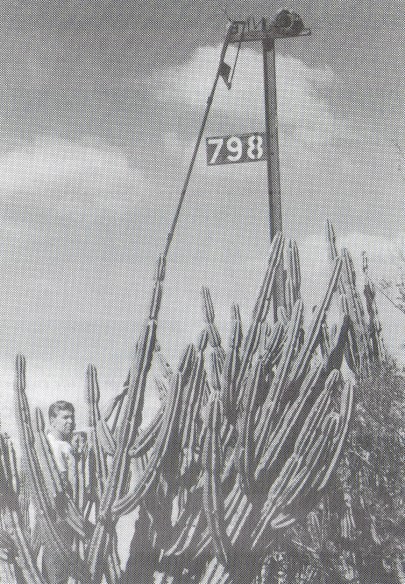
Large Image (285 Kb)
Jim using the "retriever", surrounded by cacti.
Printed materials given to us by Jose Luis Rubio show that a concession was
granted by the government of Uruguay on January 12, 1870 for the construction of
the Railroad of Northern Uruguay (FCUN). This railroad was to run from the city
of Salto, Uruguay to the current cities of Belle Union and Artigas, Uruguay,
both on the Brazilian border. Political and financial crises during the next two
decades severely delayed completion of the railroad. Rail service was finally
inaugurated to Belle Union on April 20, 1887 and to Artigas on April 17, 1891.
A single telegraph line was constructed along the entire railroad. The P.
WALTERS & CO. insulators were found on only a small section of one branch of
this line. These insulators could have been special ordered and manufactured as
early as 1870 or 1871 and as late as the mid 1880’s.
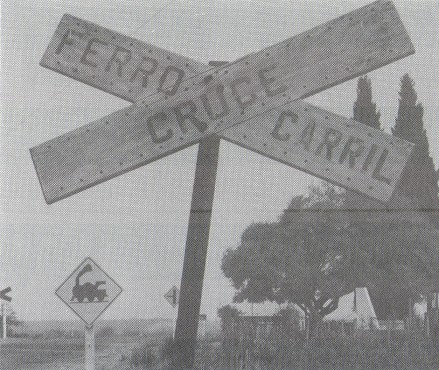
Railroad Crossing Warning and Sign. Love that little engine!
It should be noted that England was granted concessions to construct and
operate many railroads throughout Uruguay in the last half of the nineteenth
century. By 1900, England owned most of the railroads in Uruguay and operated
them with typical British efficiency. During World War II, England ran up a
large debt with Uruguay for beef, wool, leather and other needed products. This
debt, coupled with other foreign debts and the massive cost of rebuilding war
ravaged England, caused England to turn over their Uruguayan railroad system
lock, stock and barrel to the Uruguayan government in the late 1940’s as
payment in full for their war debt.
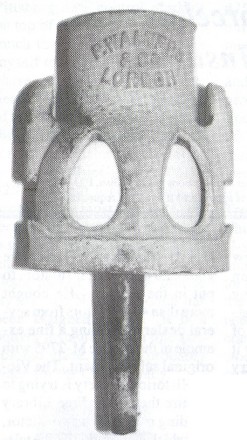 |
Close-up of embossing on the front of the
P.WALTERS
& CO
LONDON
|
|
Below is a tracing of the embossing on the rear of
the varieties marked FCUN. |
 |
|
The government of Uruguay continues to own and operate what remains of this
railway system today. All passenger train service was ended in 1988 and many
railroad freight lines were abandoned at the same time. Today, very few freight
trains or lines still operate. The Railroad of Northern Uruguay was completely
abandoned in 1988, the telegraph line taken down and poles pulled in many
places. Finding the first P. WALTERS & CO. insulator in April was very
fortuitous for Jim and me, and for the hobby in general. Due to the FCUN
embossing that exists, this classic insulator will forever be linked to Uruguay.
| 